|
PHARMACEUTICAL
POLLUTION
ABOUT -
CONTACTS - FOUNDATION -
HOME - A-Z INDEX
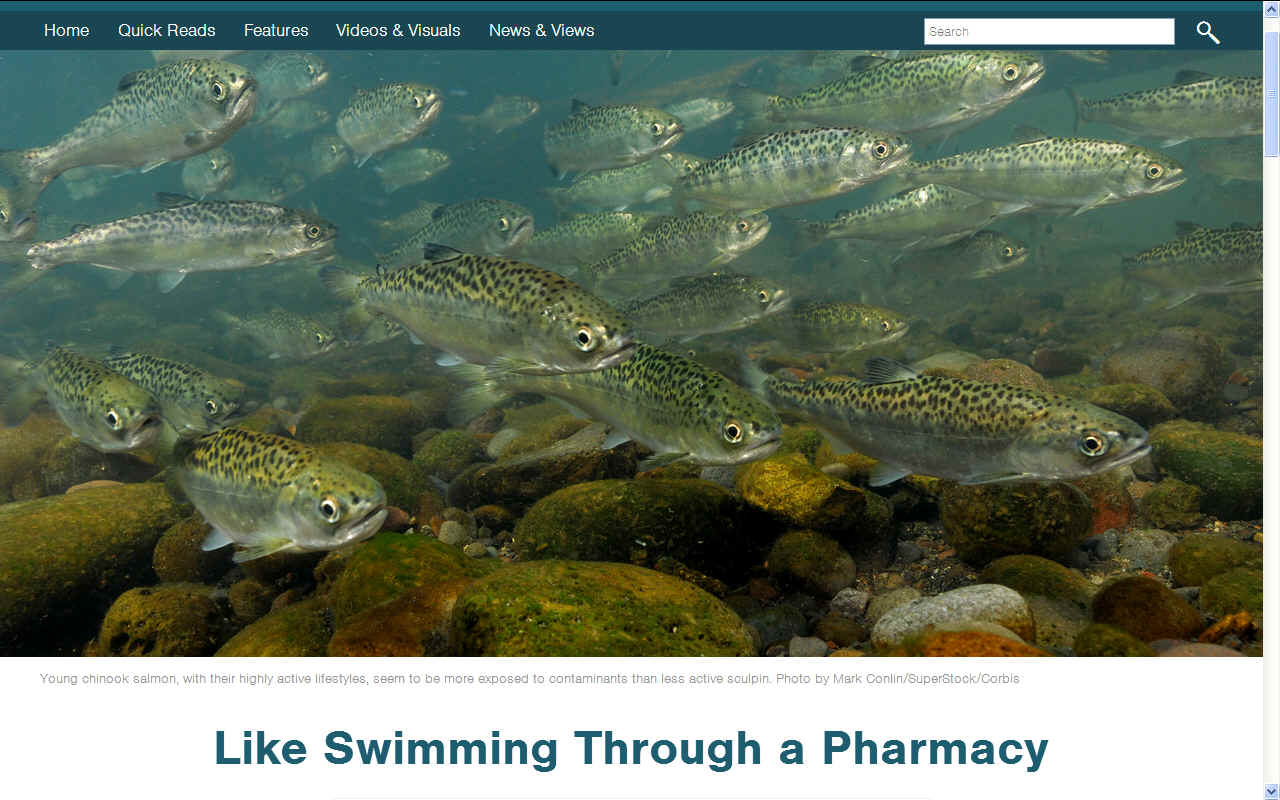
COCAINE
- How likely is exposure of eels to cocaine outside of the lab where there are no dealers in the deep ?
The reality is that cocaine exposure is not so far-fetched. A 2014 study, also by Italian researchers, found 13 nanograms of cocaine per liter of water in Italy’s Sarno River, meaning that almost 15 grams of cocaine flow through the river every day. (The street value, in case you’re thinking of going down there with a really big cheesecloth, is over US $1,300.)
Granted, the Sarno is considered to be one of Europe’s most polluted rivers, but prior research found high (sometimes higher) cocaine concentrations in other Italian rivers, too. In this study, eels were exposed to cocaine concentrations of 20 nanograms per liter—more than the Sarno, but less than the 44 nanograms per liter found in Italy’s Olona River in 2008. Eels tripping on cocaine aren’t just my personal nightmare, and they’re not just a researcher’s flight of fancy. They’re a plausible result of water pollution by drugs.
HAKAI
MAGAZINE JANUARY
5 2018 - SHELLFISH CANNOT SAY NO TO DRUGS
From coastal cities around the world, through pipes lurking just beneath the waves, streams of human waste flood into the sea. Sometimes this water is
cleaned - filtered, aerated, and treated with bleach. Sometimes it is not, and the reams of
sewage - whatever we wash down the drain or flush down the
toilet - flow into the ocean raw. If that grosses you out, consider that human excrement is probably the least crappy component of the flow, at least when it comes to environmental impacts. More troubling are certain invisible substances that easily pass through wastewater treatment plants and end up in the ocean.
Every Advil you pop or antidepressant you swallow is processed in your body and excreted, often as chemical byproducts that can still affect other organisms. Scientists have only tested a fraction of pharmaceuticals for their effects on marine life, and most remain unregulated in wastewater.
In their quest to understand the effects of drugs on marine life, however, scientists have found an involuntary ally: shellfish. Because they live stationary lives, clams and
mussels have been accidental test subjects in pharmaceutical pollution research. Now, these shellfish are helping sound the alarm about several common drugs and chemicals.
Off the shore of São Paulo, Brazil, a pipe releases mostly untreated sewage into Santos Bay. And as biologist Fabio Pusceddu of the University of São Paulo reports in a recent study, the animals around this outfall appear to be feeling the effects of our drugs.
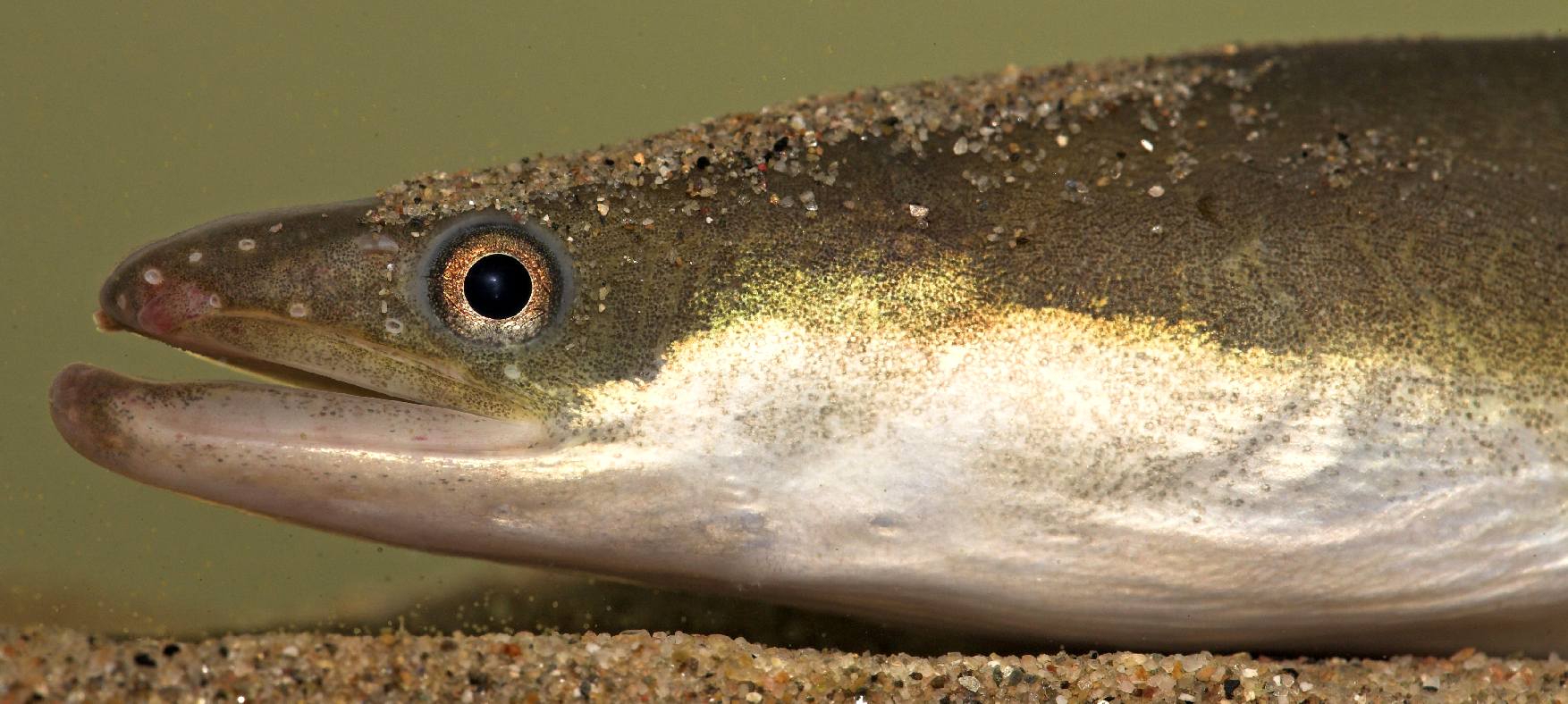
Recent studies have raised concerns about substances making it into the environment, including antibiotics in soaps and personal care products, estrogen mimics in birth control, and painkillers, but there’s not much data on the effects of these compounds on wildlife. So, Pusceddu grew shellfish in the lab on sediment contaminated with two drugs, exposing them to the same concentrations they face in Santos Bay.
One was ibuprofen, a common painkiller, and the other was triclosan, an antibacterial compound found in products including toothpastes and body washes. The drug exposure caused a range of negative effects, including malformed membranes and reproductive difficulties. This is a problem, Pusceddu says, because most toxicity assessments done by governments to see if a substance should be regulated only look at acute effects, which usually means whether the compound is lethal. But just because animals are surviving our pharmaceutical pollution doesn’t mean they are unaffected. Studies of chronic impacts from longer-term exposure are expensive and time-consuming, but it’s exactly these impacts that worry Pusceddu.
“We’re not talking about issues in one individual,” Pusceddu says, “but in a population in the long term.”
Coastal environments vary widely from city to city. São Paulo’s sewage lingers in sheltered Santos Bay, amplifying the effects of drug exposure. But on Canada’s west coast, deep water, dynamic tides, and strong currents routinely flush the Juan de Fuca Strait, where the city of Victoria,
British
Columbia, has been pumping raw sewage through only a coarse screen since the 1960s. City officials, however, are worried about pharmaceuticals and began routinely monitoring the outfalls for drugs in 2004.
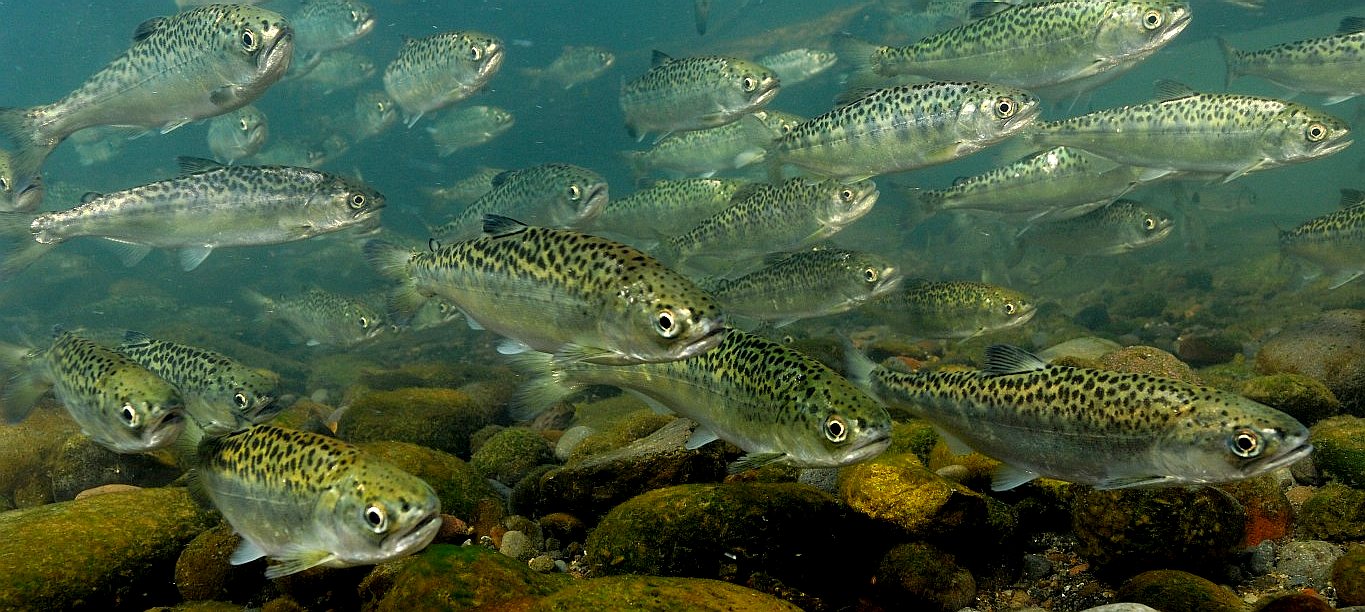
In a recent study, Chris Lowe, program manager with the Wastewater and Marine Environment Program for the Victoria region, showed that shellfish, sediment, and
water in the region immediately around sewage outfalls show traces of drugs, including triclosan and ibuprofen. Lowe’s study only looked in detail at a dozen drugs, but he and his colleagues have detected many more.
So what does this outpouring of pharmaceutical waste mean for ocean life? Unlike heavy metals, most drugs don’t
accumulate up the
food chain. Though some compounds, such as triclosan, can build up in animal fat. But since drugs are designed to be effective at low doses, a little can do a lot of potential damage.
As of yet, there’s no widely used technology to target drugs. The only way these compounds are removed from sewage is if they bind to particles that are otherwise filtered out by standard treatments or if they break down naturally. Some researchers are developing systems that can be added to treatment plants to filter out pharmaceuticals, such as activated carbon filters or bacteria specifically designed to break down drugs. But these are still in development, and many drugs escape even the most advanced treatment plants currently operating.
Pusceddu says the effects of pharmaceutical waste vary by location and solutions should, too. In
Brazil, for example, ibuprofen often comes in large packages, so people may flush a lot of expired medication. In this case, the solution may be to try to get manufacturers to make smaller packages. But ultimately, Pusceddu says we need to learn a lot more about what these compounds do in the environment. Only then can we tell if the drugs that keep us healthy are making the ocean sick.
By Amorina Kingdon

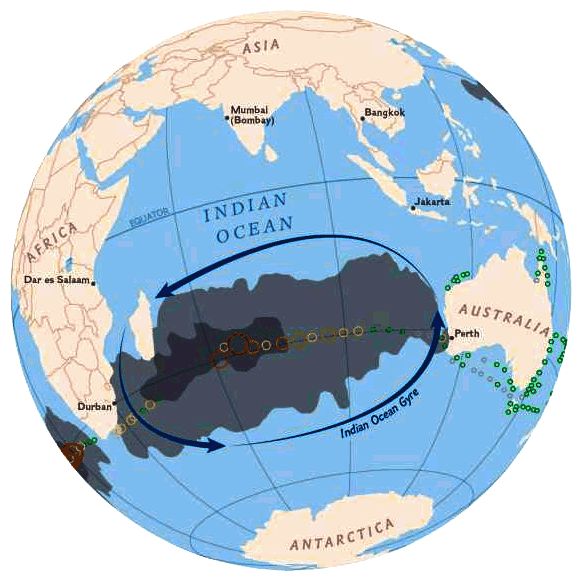


GLOBAL
WASTE PROBLEM - The
above views of planet earth as global views show us the Atlantic, Indian and
Pacific ocean gyres and estimates of plastic waste in
(thousands) numbers of pieces of plastic waste per square kilometer
of sea. The Pacific
Ocean gyres are held to be the worst at the moment. These
gyres contain some of the most concentrated carcinogens you
are likely to come across in the sea.
HAKAI
MAGAZINE MARCH 30 2016 - LIKE SWIMMING THROUGH A PHARMACY
The fish in Washington State’s Puget Sound are on drugs. In juvenile chinook salmon and staghorn sculpin, researchers recently found traces of more than 40 different contaminants, including pharmaceuticals, personal care products, and industrial chemicals.
The presence of drugs in the water is a known problem, but this new research adds an extra layer: the concentrations and diversity of contaminants vary between the two species. Highly mobile salmon, the researchers found, tend to be tainted by a larger number of contaminants, but the staghorn sculpin, which live more sedentary lives in deeper waters, tend to have higher concentrations.
What is worrisome, says James Meador, an environmental toxicologist with the US National Oceanic and Atmospheric Administration (NOAA) and one of the study’s authors, is that the various drugs—including antidepressants, antibiotics, and hormones—“were detected in water and [fish] tissue at concentrations that may potentially cause adverse effects in the fish.”
The NOAA research team looked for 150 “contaminants of emerging concern” (CECs) in water samples from three Puget Sound estuaries. Two sites, Sinclair Inlet and the Puyallup estuary at Commencement Bay, receive effluent from large wastewater treatment plants, while the third, Nisqually estuary, is a cleaner site and was used for comparison. In total, the researchers found 42 of the CECs in fish tissue: 37 in salmon, and 21 in sculpin.
Eighteen drugs were common to both fish, but concentrations varied between the species. Salmon had higher levels of Zoloft, Valium, and caffeine, while the sculpin had greater concentrations of amphetamines, certain antibiotics, and DEET, the active ingredient in many
insect repellents.

STUNNING
REVELATIONS - Fish from Commencement Bay in the Puyallup estuary had the highest number of contaminants of all of the waterways tested.
Some drugs were unique to the salmon, such as a variety of anti-cholesterol drugs, heart medications, certain antidepressants, and antibiotics. The highest concentration of any drug found in the water treatment plant effluent was metformin (used for diabetes), which was detected only in the sculpin.
Though this study did not specifically address how the drugs are affecting the fish, previous research has shown that many pharmaceuticals can harm
aquatic life. The antidepressant Fluoxetine, for instance, inhibits algae growth, which can cause problems in aquatic ecosystems. A concern with multiple drugs being present is that they may interact and cause added complications.
Meador says the reason chinook salmon are more contaminated than the sculpin is likely because salmon tend to eat more and pass more water over their gills than the other fish species. “At this [young growth] stage in their life they can eat 20 percent of their body weight per day,” he says.
Which drugs were in which fish also depended on where the animals were caught, he says. For example,
salmon from the Puyallup estuary had the highest number of CECs (25), while fish from a nearby hatchery had the fewest (seven). Salmon from Sinclair Inlet had 19, while those from the Nisqually estuary had 13.
The Puyallup salmon had higher concentrations of amphetamines and antidepressants than salmon from the other sites. But their brethren from the Sinclair estuary had higher concentrations of caffeine and fluocinonide (a steroid used for skin rashes).
“We don’t know how much these fish move around,” Meador says. “Some of the differences could be due to the time for exposure, or the concentrations found in the estuary water, which would be variable depending on where the fish is hanging out.”
By Pippa Wysong

OXAZEPAM -
While anti-anxiety medication helps countless humans function better in their daily lives, new research shows the drugs also make salmon less inhibited, which can have potentially devastating effects.
In a study out of Sweden’s Umeå University, researchers show
oxazepam - a pharmaceutical prescribed to humans for the treatment of anxiety, alcohol withdrawal, and
insomnia - affects the downstream migratory behavior of Atlantic salmon. Exposing fish to anti-anxiety medication isn’t something that only happens in scientific studies: when humans excrete drugs, some can end up in wastewater effluent and subsequently in sensitive habitats where salmon may get an unintended dose. The researchers found that when fish ingest oxazepam, it makes them migrate faster and farther—potentially recklessly so.
Leaving the freshwater nursery and heading out to sea is part of the salmon lifecycle, but landing in the big blue too soon can be risky. Fish may find ocean conditions
unfavorable - too cold, too dangerous, or lacking food, for example.
Gustav Hellström, a salmon biologist at Umeå University and lead author on the study, says stress is probably an adaptive response as it may minimize unnecessary risk-taking and help maintain alertness.
“If we interfere with the swimming behavior that’s been adapted to that river, it’s probably bad for the salmon. It would expose them to more risks,” Hellström says. “The migration behavior in itself is probably matched evolutionarily to different kinds of environmental factors.”
Hellström and his colleagues studied how salmon respond to oxazepam in a large artificial stream and in a natural stream in Northern Sweden. In both environments, they found that fish treated with oxazepam migrated nearly twice as fast as sober salmon. Hellström points out that the salmon in his study were given a low dose of the drug within the range of concentrations that have been found in effluent water.
“The paper gives pretty strong evidence that anxiety and stress are a force that counterbalances foraging and migration,” says Will Atlas, a PhD candidate with the Hakai Institute* who wasn’t involved in the research. “I think we’ve kind of known that for a long time in how we understand behavioral ecology, but this is a very tangible demonstration of it.”
By Raina Delisle
FISH
& NUTRITION
Healthy
fish are extremely nutritious and we should do what we can to
keep it that way. Any given serving of fish is packed with protein, and contains B vitamins and minerals including potassium and selenium. One serving (3-ounces) contains from 80 (lean fish like cod) to 150 calories (fattier fish, like salmon).
Higher fat fishes with their omega-3 fatty acids are the ones most linked to heart health benefits. Omega-3 fats are found in fish like salmon, mackerel, herring, lake and rainbow trout, sardines and albacore
tuna.
Unfortunately,
almost all fish and shellfish today come with at least some contaminants, accumulated in waters with pollutants and pesticides.
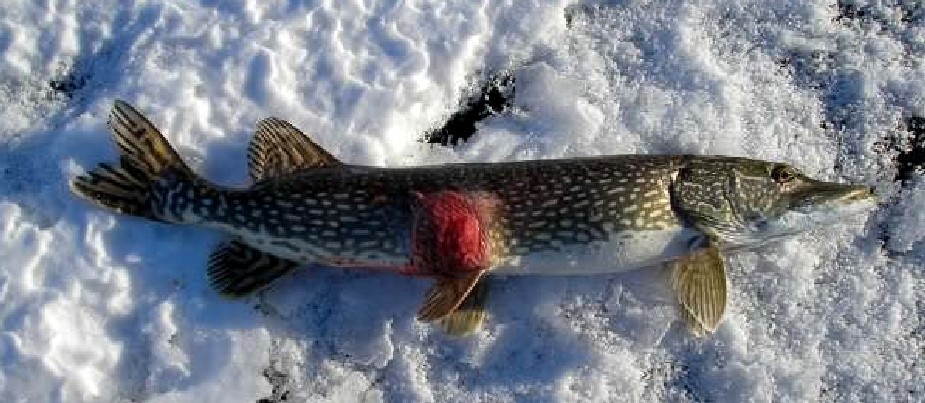
FISH
WITH CANCER - Pollution
from nuclear power plants in any shape or size is unthinkable.
We must stop using nuclear energy for anything that can harm
the marine environment, including nuclear reactors for aircraft
carriers and submarines.

LIVESCIENCE
AUG 2012 - The first case of skin cancer in a wild marine
fish population looks eerily similar to the melanoma that
plagues humans, researchers report 1-8-12.
Coral trout living on Australia's Great Barrier Reef are
directly beneath the Antarctic ozone hole, the world's
largest, which is the result of the depletion of ozone in the
atmosphere that normally protects humans from harmful UV rays.
The diseased fish were caught around Heron Island and One Tree
Island.

LINKS
& REFERENCE
https://www.hakaimagazine.com/news/surprising-side-effect-anti-anxiety-medication-salmon/
https://www.hakaimagazine.com/news/dr-eelgood/
https://www.hakaimagazine.com/news/shellfish-cant-say-no-to-drugs/
https://www.hakaimagazine.com/news/swimming-through-pharmacy/
https://www.livescience.com/41655-great-white-shark-cancer.html
https://www.livescience.com/22042-humanlike-skin-cancer-wild-fish.html
ABS
- BIOMAGNIFICATION
- BP DEEPWATER - CANCER
- CARRIER BAGS
- CLOTHING - COTTON BUDS - DDT - FISHING
NETS
FUKUSHIMA - HEAVY
METALS - MARINE LITTER
- MICROBEADS
- MICRO
PLASTICS - NYLON - OCEAN GYRES
- OCEAN WASTE
PACKAGING - PCBS
-
PET - PLASTIC
- PLASTICS
- POLYCARBONATE
- POLYSTYRENE
- POLYPROPYLENE - POLYTHENE - POPS
PVC - SHOES
- SINGLE USE
- SOUP - STRAWS - WATER
This
website is provided on a free basis as a public information
service. copyright © Cleaner
Oceans Foundation Ltd (COFL) (Company No: 4674774)
2018. Solar
Studios, BN271RF, United Kingdom.
COFL
is a charity without share capital.
|










